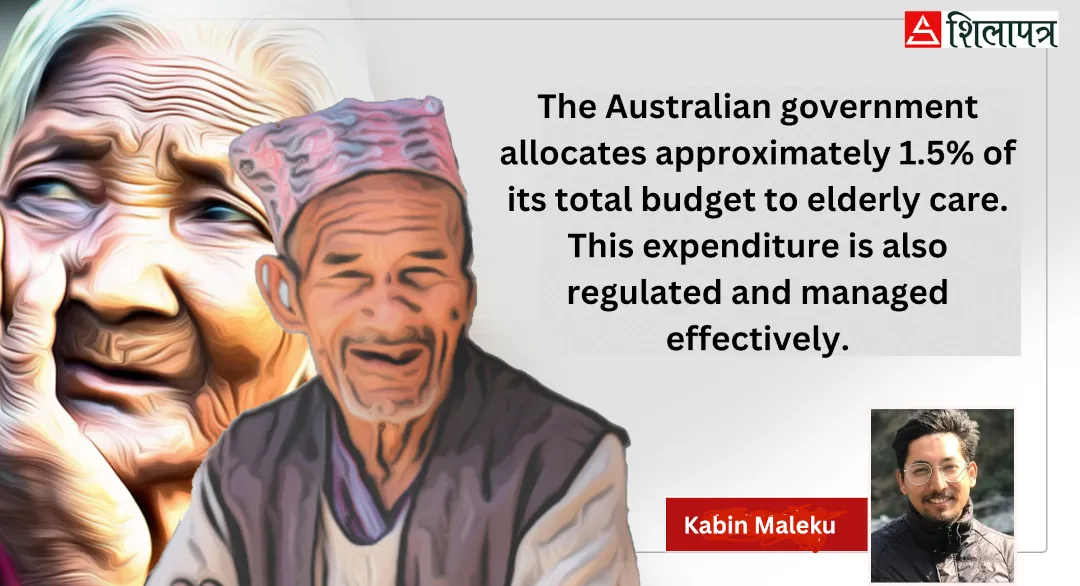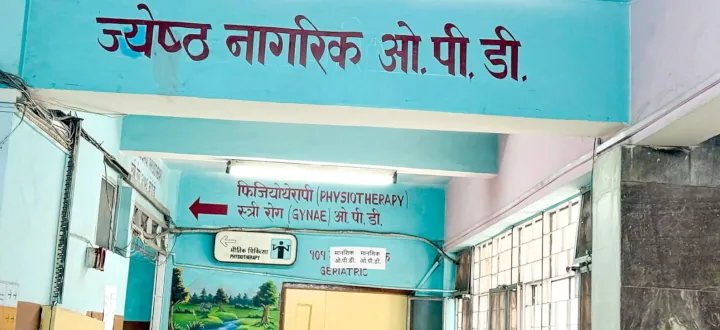
Who should take care of the elderly, the state or the family?
- October 12, 2023
Aging is an undeniable reality. Along with the growth in population, the increase in the elderly population is another inevitable truth. Many countries have already benefited from population growth and are now effortlessly managing the burden of an aging society. Those countries currently experiencing a rise in the elderly population are also preparing to address this challenge in a systematic way.
Developed countries have consistently placed a high priority on elderly care, policies, programs, and their implementation. These nations recognize the importance of addressing the needs of their aging populations through well-designed strategies. On the other hand, low-income countries struggle to formulate adequate policies and programs for elderly care, often lacking concrete procedures to support their aging citizens effectively.
Learning from Australia’s Experience
Australia has been proactive in sharing its experiences regarding the development and implementation of aged care policies and programs. Through ASK Foundation, Australia has engaged with various Asian countries, including Nepal, to share its knowledge and strategies. I had the privilege of being selected for the ‘Aged Care Management and Policy’ fellowship under the Australia Awards Scholarship through ASK Foundation. This program saw participation from seven countries, including Nepal.
During this fellowship, we had the unique opportunity to observe and understand the policy-making processes and implementation strategies of a prosperous nation like Australia. Institutions like Flinders University and the government agency ARRIA played a pivotal role in conducting evidence-based research and studies that informed the development of aging-related policies. Moreover, the experiences and challenges faced by private service providers were also analyzed, providing a comprehensive view of the sector.
The Importance of Data-Centric Policies
The Australian government’s approach to policy-making is notably data-driven. Universities receive grants to conduct research, and policies are crafted based on the data these institutions generate. This research identifies gaps and suggests programs for improvement, which are then debated and discussed among government officials and experts. Furthermore, these universities engage in close dialogue with private service providers and companies to ensure that policies are well-rounded and effective.
Each policy-making process is time-bound, with clear objectives set for implementation within a specified period. Data-driven policies take into account various factors such as population growth rates, global conditions, workforce availability, resources, and the contributions required from the government. These projections are carefully calibrated to ensure that the policies are realistic and actionable.
Planned Implementation of Government Priorities
The Australian government systematically translates its priorities into actionable programs. During our fellowship, we observed that institutions like Flinders University and ARIIA had allocated approximately 1.4 billion dollars to aging research and care. This substantial investment underscores the importance placed on addressing the challenges of an aging population.
In conclusion, as the global population ages, the need for effective policies and programs for elderly care becomes increasingly critical. Countries like Australia offer valuable lessons in how to approach this challenge with a data-driven, systematic, and well-funded strategy. For low-income countries, there is much to learn and adopt from these experiences to ensure that their aging populations are cared for with dignity and respect.
Policy Aspects
According to Nepal’s Senior Citizens Act of 2006, the primary responsibility for the care of the elderly lies with their immediate family members. In contrast, Australia has embraced elderly care as a national responsibility. The government takes on this responsibility as a way of acknowledging and honoring the contributions that the elderly population has made to the country’s development throughout their lives.
Australia began such policy initiatives as early as the 1980s. It’s clear that in a few decades, Nepal’s elderly population will also increase significantly. Therefore, there is a need for the Nepalese government to start making improvements to its policies now.
Currently, the Nepalese government provides only a limited old-age allowance to the elderly, citing limited resources. This shows that the government is shirking its duty, placing the entire responsibility on individuals and their families. This approach will likely not lead to a happy old age.
Human Resources and Infrastructure
The Australian government, through its Ministry of Health, has developed a workforce tailored to the care of the elderly, drawing from long-term experience, research, and the support of professional experts. Moreover, the infrastructure and workforce are designed to meet the personal needs of the elderly, such as dietary requirements, health conditions, cultural and religious practices, mental health, and physical disabilities.
In this regard, the workforce is fully centered on elderly care. For instance, care facilities have support staff, healthcare workers, nurses, acupuncturists, speech therapists, social workers, and doctors according to the needs of the elderly population. It was also observed that many of the care workers in Australian eldercare homes are Nepali.
Stakeholder Coordination
Before implementing various policies, the Australian government collaborates extensively with universities, companies working in relevant fields whether private, governmental, non-profit, or religious and ensures private sector involvement. This collaborative culture allows for in-depth consultation among multiple parties, rather than placing blame on any single entity.
In Australia, government investment reaches the elderly directly. Such plans are embedded in government grants, and the money deducted from individuals is accumulated in a separate fund for elderly care. The Australian government spends about 1.5% of its total budget on elderly care, and this expenditure is well-regulated. Regulatory bodies that oversee these funds are fully independent of government mechanisms, although they receive government grants.
Armed with this invaluable knowledge, we completed our nearly three-week educational visit. It became clear that Nepal also has much work to do. Just as the Australian government began safeguarding its elderly population through policy measures nearly 40 years ago, Nepal, too, must develop a strategic plan for elderly care. There is an urgent need for Nepal to work with stakeholders and experts to ensure a quality old age for its citizens.
Source- Kabin Maleku, https://shilapatra.com/detail/122317

